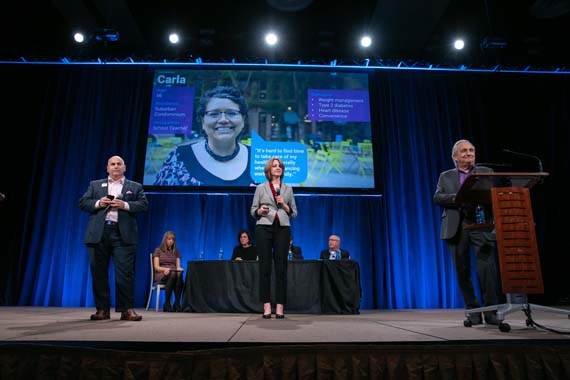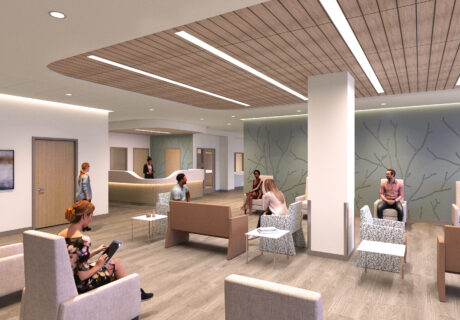Breaking Through Finalist: Team Q+A
The runner-up in Healthcare Design’s conceptual design competition, Breaking Through, was a team from AECOM, which presented its Hello Care concept on-stage during the 2018 Healthcare Design Expo & Conference. The idea delivers a system of autonomous vehicles that brings care to patients and eliminates the need for most clinic or hospital visits.
Healthcare Design talked to the team, which included Christine Hester Devens, associate principal, senior interior designer; Jim Thomson, vice president, managing principal; and Greg Mare, vice president, healthcare practice leader, Americas, about the concept and how it was developed.
Find the interview below, and read more about Hello Care here.
Healthcare Design: What inspired you to take part in the Breaking Through conceptual design competition?
Christine Hester Devens: We see the challenges our clients are facing every day in trying to deliver healthcare for less, with fewer providers and improved patient experience. We also looked at this from the personal perspective of how can we solve our own healthcare accessibility challenges: providing care for our aging parents while caring for our own children, our own lack of time to visit a physician, and rural accessibility.
How did you form your team? Did you have a strategy in recruiting participants?
Greg Mare: AECOM is a diverse organization with talented people creating solutions that deal with urban environments, advanced technology, autonomous vehicles, healthcare innovations, patient experience, and more. We looked to the leaders in each of these disciplines and asked them, given their specific expertise, how they would solve healthcare needs in the future.
What future challenge in delivering healthcare did you choose to address with your conceptual design and why?
Hester Devens: Making healthcare accessible, and a positive, convenient, high-quality experience at a reasonable cost with exceptional outcomes.
Breaking Through was a long process that basically spanned an entire year. How did you approach the development and refinement of your concept from first ideation to now?
Mare: After assembling our initial team, we discussed multiple ideas for what’s next in healthcare. We kept coming back to a solution that needed to address accessibility, which became autonomous healthcare and evolved into “Personalized Healthcare; Same-Day Delivery.” After developing this into Hello Care, we continued to research what people want and received feedback from our personal network of family and friends and from senior healthcare leaders across the country, which broadened our group to include a more diverse perspective.
What traditional project limitations (cost, schedule, codes, etc.) wouldn’t have allowed this concept to be a reality today?
Jim Thomson: The most traditional limitation is our ability to think big picture. We tend to think about change in small, definable increments. What we need to do is to think about disruption, and how we can change healthcare in significant ways. The biggest limitation is waiting for artificial intelligence (AI) to catch up with our idea.
How might this idea inspire future design solutions, even within the traditional confines of healthcare design?
Hester Devens: Hello Care is about identifying a healthcare need and disrupting the things that stand in the way of achieving it. And even before autonomous vehicle technology fully matures, Hello Care could inspire the design of remote telehealth facilities that would increase access to care today or the development of products like a smart toilet that collects and analyzes your lab specimen.
What do you find most innovative about your concept?
Mare: Bringing healthcare to you, on demand!
Do you think innovation still exists in healthcare design? How can we as an industry better encourage it?
Mare: The need for innovation in healthcare is critical. It exists when we demonstrate its value. We need more initiatives like Breaking Through that encourage our profession to think differently.



